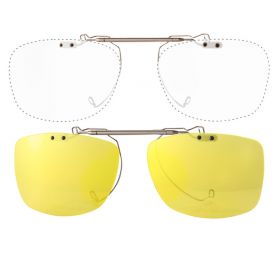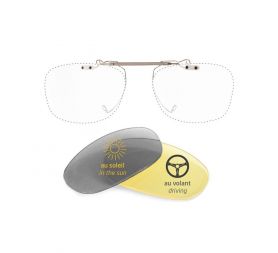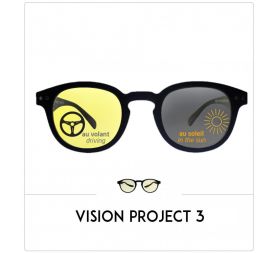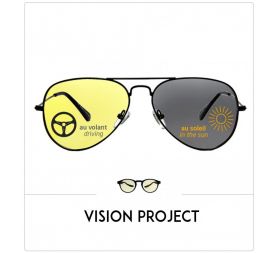Easy Drive Lenses for Night Driving
Yellow photochromic lenses can offer several specific benefits for driving:
-
Improved contrast and visual clarity: The yellow tint of the lenses can help improve contrast and detail perception, especially in low light conditions such as dusk, sunrise or sunset, or on a cloudy day. This can make objects and obstacles on the road more easily identifiable, which can improve safety while driving.
-
Reduction of glare and reflections: Yellow lenses can filter blue light and UV rays, which can reduce glare caused by headlights from other vehicles or by the reflection of light on wet or icy surfaces. This can help improve visual comfort and reduce eye fatigue when driving at night or in bad weather.
-
Adaptability to changing brightness: Photochromic lenses automatically adapt to the intensity of the surrounding light by darkening or lightening. This means that photochromic yellow lenses can provide optimal visual protection regardless of the time of day or weather conditions.
-
Reduction of visual fatigue: By improving contrast and reducing glare, yellow lenses can also help reduce visual fatigue during long journeys, which can increase comfort while driving.
In summary, photochromic yellow lenses may offer improved perception of contrast and detail, reduction in glare and visual fatigue, and adaptability to changing light conditions, making them a potentially advantageous choice for driving, especially on dark or cloudy days. However, it is important to note that effectiveness and comfort may vary from person to person, and it is recommended to consult a vision health professional for personalized advice on choosing eyeglass lenses for driving.
Pink mirrored lenses may offer some specific benefits for color blind people, although this depends on the type and degree of color blindness each individual has. Here are some potential benefits:
-
Contrast enhancement: Pink lenses can help accentuate contrasts between colors, which can make it easier for some color blind people to distinguish between different shades of colors. This can be particularly useful in situations where accurate color perception is important, such as when reading graphics, driving, or identifying traffic lights.
-
Reduction of color confusion: Pink lenses can help lessen the effects of certain types of color blindness, such as red-green color blindness, by improving the distinction between shades of color. red and green. This can make certain daily activities, such as choosing clothes, recognizing color signals or differentiating ripe fruit, less problematic.
-
Light Filtering: Mirrored lenses, in addition to their pink tint, can also filter out some excess light, which can reduce glare and visual fatigue in some colorblind people.
However, it is important to note that the benefits of pink mirror lenses may vary from person to person depending on the type and severity of their color blindness. It is recommended to consult a vision health professional specializing in color vision disorders to obtain personalized advice on the most suitable optical solutions for each individual case.












